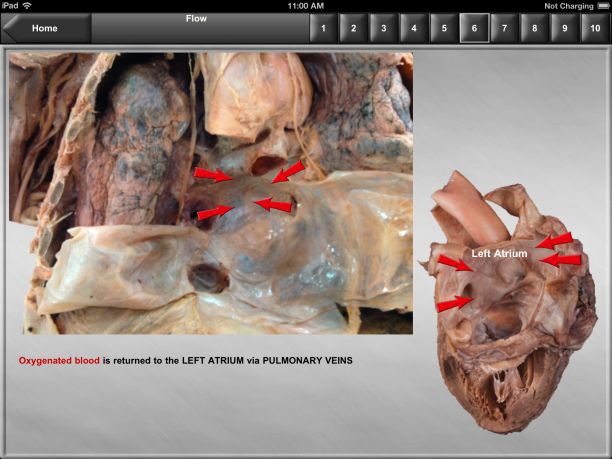A new app released by the UA College of Medicine is changing the way medical students study the human heart.
The Heart Anatomy Explorer I application, which is available on the iPad and Mac as well as Windows computers, was developed by Mark Nelson, a professor of pathology, and Maria Helen Czuzak, an assistant specialist and anatomical instructor who works in the Department of Cellular and Molecular Medicine.
Nelson and Czuzak were looking to provide students with a better way to learn about the heart’s anatomical structure. Budget limitations, especially on corpses available for lab dissections, created challenges for instructors like Czuzak, who saw technology like iPad applications as the next tool to bring into the classroom.
Using the app, students can rotate a 3D image of the heart, allowing them to see the organ from many angles, both in and out of the chest.
“Our goal was to figure out a way to give them [students] a teaching tool that worked with modern technology,” Nelson said. “Many times in lab dissections with specimens we find that it is antiquated, and they don’t capture the details necessary to learn its [the heart’s] real anatomy.”
Czuzak said the app has also made her lessons a “better and easier” experience. The app is not meant to replace laboratory work, but rather serves as a teaching aid to prepare students for lessons in the laboratory. It is available for students to preview or review material outside of class.
First-year medical students Katherine Nielsen and Elise Vo both said they have benefited from the app by using it as a study guide.
“Textbooks only show flat images, which makes it harder to tell how deep and back the cavities of the heart are,” Vo said. “We also get different types of cadavers where the heart and arteries have different shades of color from the textbook. This app makes everything universal. It was like going from black-and-white TV to high definition.”
Since the first model of Heart Anatomy Explorer has received positive feedback, Nelson and Czuzak said they plan to build on the project and make improvements. Changes would include adding images of hearts damaged by disease and an interactive encyclopedia that would make the app easier for students in different areas of study to use.
“This app represents what can be done to overcome learning curves when working with a team,” Nelson said. “It’s all about finding the right pieces to innovate instruction … and it’s time we start embracing technology like this.”









